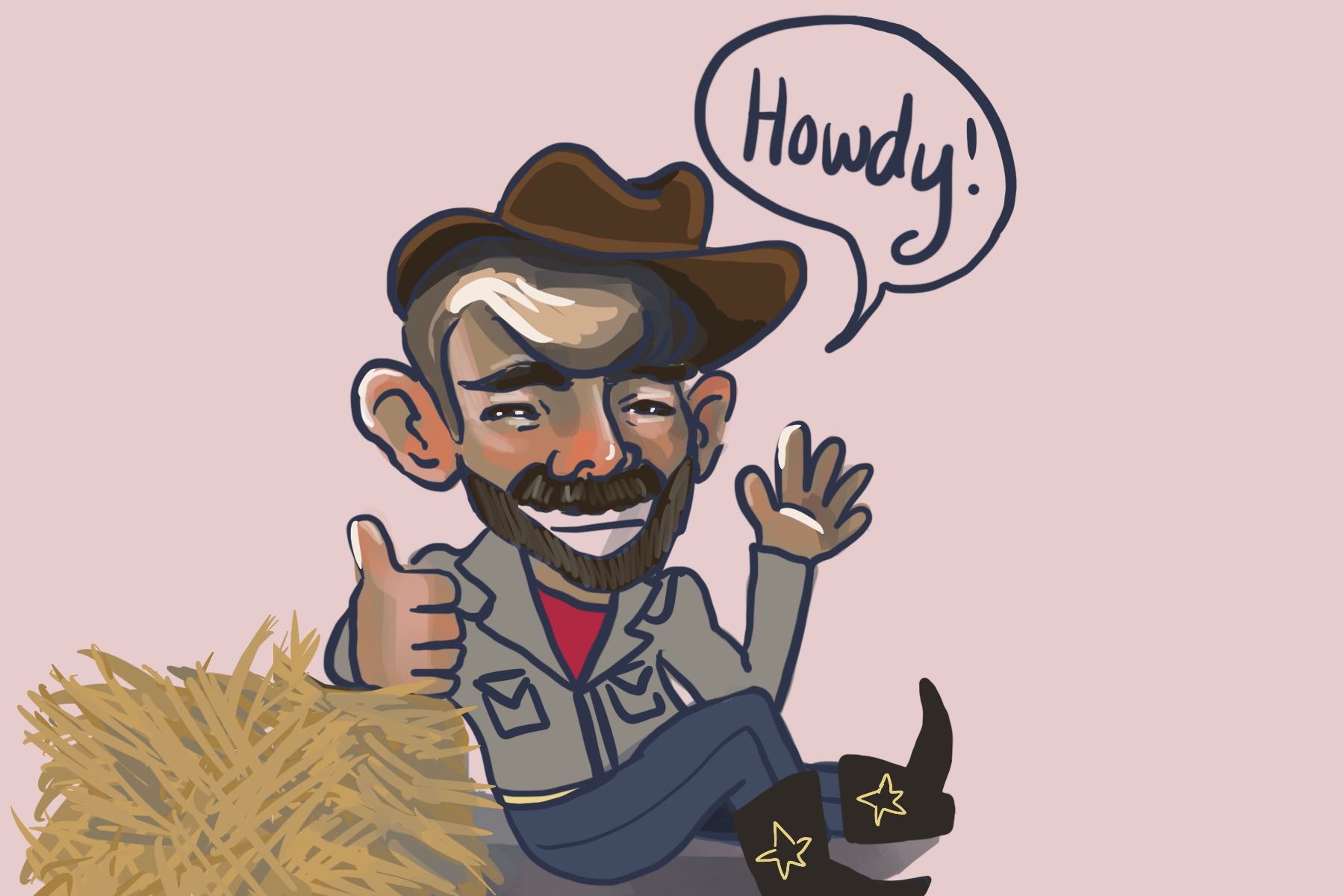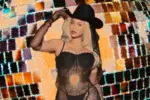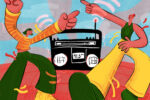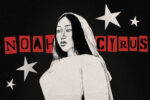Start a conversation with someone about musical preferences. Anyone — a stranger, a professor or that random guy you always run into at the supermarket. Regardless of who you speak to, you are likely to hear the declaration: “But I hate country music!”
This vehement aversion to country music is certainly a popular social trend. Even those who enjoy Brad Paisley, Tim McGraw, Carrie Underwood or “old” Taylor Swift will scarcely make such a confession. While one might claim to dislike the pop-country music that dominates FM radio stations and the Country Music Awards, this is not all the genre has to offer.
From rockabilly to outlaw country to country-rap, the realm of country music is more diverse than many people realize. Themes of imprisonment, drugs and murder are as common in outlaw country as heartache, while tractors and patriotism are more commonly featured in pop-country. It’s a shame that such a rich genre is widely discredited due to its radio representation.
So, before you knock country music, take a moment to explore its lesser known sides. Who knows? You might even become a fan.
Early settlers to the Appalachian Mountains endured lives of poverty, hardship and isolation — they had a dismal existence with little chance of prosperity. In times of uncertainty, struggling to survive, these immigrants wrapped themselves in the comfort of music.
Music is art — many musicians are self-taught, audiences consist of family and community members and each song tells a story. Country music stems from an oral tradition that is meant to preserve culture and strengthen communities. Through lyrics and instrumentation, rural tunes reminisce about European homelands, admire the local landscape, weave tales of the region’s history and tell of past hardships.
Eck Robertson, John Carson and Jimmie Rodgers were the first to bring country music out of small Appalachian towns and into recording studios. Soon after Robertson recorded the first two mountain tunes for Victor Records in 1923, the Father of Country Music dominated the stage.
Rodgers’ song, “Blue Yodel #1,” sold over a million copies in 1927, propelling both his career and rural music into the spotlight. With rural sounds now available to the masses, country music began to emerge and evolve.
Hollywood was among the first to claim country music. The rising popularity of Western films provided the perfect niche for rural-storytelling songs. Films in the 1930s and 1940s created the now well-recognized western trope of the “singing cowboy” — a heroic gunslinger who sings ballads of his adventures.
This era is such a staple of American culture that the music and cinema industries continue to pay it homage. From modern Westerns such as “Justified” and “Deadwood” to Bruce Springsteen’s new album, the entertainment industry recognizes the traditional roots from which it grew.
But how do Appalachian settlers and singing cowboys transition to songs like “She Thinks My Tractor’s Sexy” and “Red Solo Cup”?
During the 1950s and 1960s, a split developed in the country-western music scene that fostered the modern distinction between pop-country and alternative country styles. As rock and roll began to emerge, artists like Elvis Presley, Johnny Cash and Bakersfield Sound blended its blues rhythms with western styles to create a subgenre know as rockabilly or honky tonk.
Nashville record labels produce a style of country music that rejects the influences of rock altogether. Nashville sound, as the genre is known, replaces the rough fiddles, guitars and vocals of rockabilly with a smoother, gentler sound. Chet Atkins, Patsy Cline, Don Gibson and Jim Reeves are among the first to popularize the genre.
Although both rockabilly and Nashville sounds remain prominent and influential aspects of country, Nashville sound became the commercial success — and it continues to be at the forefront of today’s pop-country.
The 1980s was the age of alternative music — alternative rock, pop and punk all became subgenres with dedicated followers. And country music was no different. Beginning in the 1970s, alternative country musicians, seeking to break from Nashville sound, resurrected the storytelling concept of original country and cowboy ballads. Instead of nostalgic settlers and heroic cowboys, however, outlaw country features antiheroes and renegades.
Some listeners compare the themes of outlaw country to those of the West Coast rap scene. The artists write their own music, draw inspiration from life’s devastation, reject mainstream music etiquette and are unafraid to sing about topics that make people uncomfortable. Each seeks to defy and question the predisposed notions of the genre rather than praise country and tradition.
Although country rock, southern rock, outlaw country and other alternative country subgenres have their own unique sound and history, artists do not always fit neatly into one category.
For example, Drive-By-Truckers are a well-known southern rock group — each of their songs follows the storytelling concept of outlaw country, but instead of a wayward hero, the band’s narratives confront life’s devastating realities including incest, murder, heartbreak and addiction.
Other famous outlaw and alternative country artists include Willie Nelson, Waylon Jennings, Ray Wylie Hubbard, The Allman Brothers, Merle Haggard, Blue Mountain and Bob Dylan.
Since its heyday, however, alternative country genres have fallen from popularity. Although you can tune into the Sirius XM stations “Willie’s Roadhouse” and “Outlaw Country” to get your fix, most FM radio shows solely feature the pop-country style that grew from the Nashville sound.
Garth Brooks, Shania Twain, Tim McGraw, Faith Hill and Dixie Chicks proliferated the resurgence of pop-country during the 1990s. Television programs like “American Idol” further revitalize and disperse the genre with finalists Carrie Underwood, Crystal Bowersox and Scotty McCreery.
Pop-country is defined by its desire to reach mainstream audiences by using the catchy melodies and stylistic elements of pop music. In doing so, the genre deals with less controversial themes than rockabilly and alternative country and highlights the idyllic aspects of country life rather than painting a picture of its hardships.
Country-folk singer Tyler Childers describes the agony of Kentucky coal mines, while Luke Bryan praises the rain for bringing crops, whiskey and a woman who “feel[s] a little frisky.” Childers’ “Coal” is somber with deep folk melodies, where Bryan’s “Rain is a Good Thing” can easily get someone up and dancing.
On the other hand, country-rap is relatively new to the pop-country scene. Kid Rock’s 1998 hit, “Cowboy,” was one of the first country-rap infusions along with the Mo Thugs Family single “Ghetto Cowboy” released the same year.
In 2012, country group Florida Georgia Line collaborated with rapper Nelly to create a Billboard Top 10 Hit, and country-rap continued to gain popularity with Young Thug’s “Beautiful Thugger Girls” in 2016.
However, the budding subgenre is experiencing some growing pains. Lil Nas X’s “Old Town Road” reached No. 19 on Billboard Hot Country Songs but was removed after the magazine disqualified it for not fitting the country genre. Controversy immediately began regarding possible racial discrimination and the definition of country music.
After the release of a remix with Billy Ray Cyrus, “Old Town Road” once again skyrocketed on the charts. The single held No. 1 on Billboard’s Hot 100 and Rolling Stone Magazine’s Top 100 Chart.
From the 1900s Appalachian Mountains to today’s music streaming platforms, country music is a genre that grows and evolves with audiences’s tastes and social preferences. And, as with any genre, one style dominates radio stations and record labels. In country music’s case, its social misunderstanding completely overshadows an entire history of subgenres.
So next time your conversation about musical preferences leads to an “I hate country music” moment, remember that it is difficult to hate over 100 years of musical history.
















